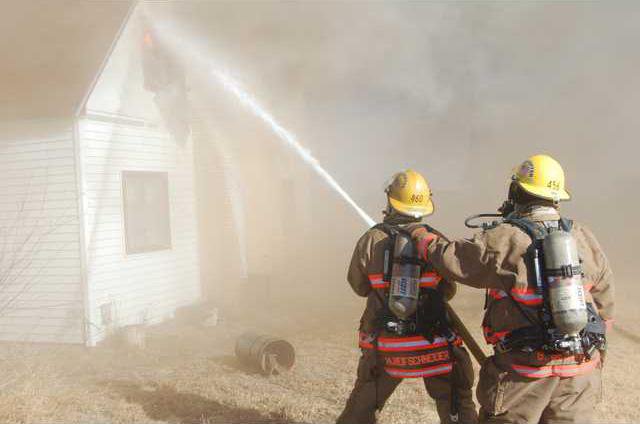Grease fire forces story evacuation
A grease fire at the Dillons grocery store, 10th and McKinley, Thursday evening damaged the deli area and forced the evacuation of the building, Great Bend Fire Chief Mike Napolitano said.
According to the chief, the fire alarm at the store went off at about 5:30 p.m., and when Great Bend Fire Department crews arrived, "there was no smoke visible from the outside." However, they did find light smoke in the delicatessen area.
The blaze had apparently started in a deep-fat fryer in the deli, but employees had used a dry-power fire extinguisher to put out the flames. All the firefighters had to do was ventilate the store.
"The fact that the employees used the fire extinguisher to control it was great," Napolitano said. "They kept it from spreading."
At the time of the fire, the extent was unknown. So, protocol called for the building to be evacuated.
Crews were on the scene for about an hour.
Napolitano said the Kansas Department of Health and Environment was called in to inspect Dillons afterwards. The store did reopen later Thursday night.
The chief estimated the fire did about $10,000 in damage.
Investigators from the Kansas State Fire Marshal’s Office and the Great Bend Fire Department determined the blaze that destroyed a house southeast of Great Bend Thursday afternoon was likely caused by an electrical problem, Fire Chief Mike Napolitano said Friday morning.
"It originated in the east end of the attic," Napolitano said. The first report of the fire to Barton County 911 indicated flames were shooting out of the roof.
Despite the efforts of firefighters, the home of Shawn Crane Jr., 144 SE 20 Ave., was considered a total loss. With Christmas just around the corner, "this is a sad time," the chief said. The family did, however, have insurance.
Most importantly, everyone escaped the burning house unharmed.
As for fighting the blaze, "our guys made several attempts to get into the attic" to dowse the flames. They used a circular saw and poles to cut into the roof and shoved a hose into the holes.
However, it was too hot. The fire was too far along and the men had to retreat before the roof collapsed. Once a fire gets into a roof area, the chief said it is very difficult to contain.
The first call was at about 1:20 p.m., but it took less than an hour to determine it was a hopeless fight. "We had to back off and be defensive" to keep the fire from spreading and damaging surrounding structures.
At one point, firefighters ran out of water and had to wait until a pumper truck from the Ellinwood Fire Department arrived. After that, Great Bend trucks shuttled back and forth from the fire to in-town hydrants, and trucks from Hoisington and Stafford brought water. "We have a good mutual aid (agreement with other departments). We had no problem after that."
Napolitano estimated firefighters pumped between 18,000-20,000 gallons of water on the fire, with tanker trucks carrying up to 3,000 gallons per load. The hoses spray about 100-150 gallons per minute.
"That’s one of the challenges of being in the country," Napolitano said. Remote, rural locations are difficult for firefighters because of the lack of water sources and the distance from fire stations. "It takes time, unfortunately."
Such devices as dry hydrants (essentially ponds or man-made lagoons that hold water) need a water source and have to be full around the clock every day of the year.
Most of the firefighters left the scene by late afternoon. Some remained as the investigation into the blaze took place Thursday evening.
The Barton County Sheriff’s Office also had officers at the scene.





